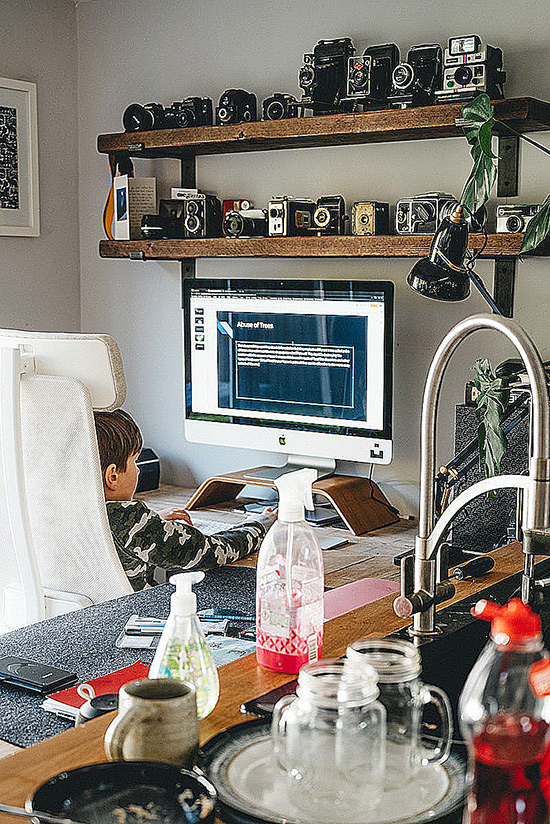A year after educators and students had to adjust to remote learning, people are still learning to meet to the specific needs of an online learning environment. With the possibility of schools adopting a hybrid learning model for Academic Year 2021 to 2022, it looks to be more prudent for parents and students to prepare their homes, or at least a designated area in their homes, for this sort of setup.
A hybrid learning model combines the flexibility and convenience of asynchronous and synchronous online learning with the intimacy and immediacy of face-to-face classes and instruction. This sort of learning environment reduces the need and number of students in a school by moving a significant amount of course delivery through online methods.
Last year, things were much more uncertain and nobody really expected the lockdown to last as long as it did. Parents and students had to make do with makeshift workspaces for work and schoolwork, but now that it looks like remote learning will be the standard for at least a while, investing the time and energy into creating a more permanent space that’s more conducive to focused and effective learning isn’t such a bad idea at all.
Designate an area in your home
By now we should all have heard of how important setting boundaries is when our home life and work life can’t be easily segregated by physical space anymore. No longer can we shut off thoughts about work or school once we get home. This is especially true for younger kids who are probably struggling to switch between school mode and home mode.

Before you set up the space, make sure that whatever area you choose to section off has adequate internet connection and that the student has a device for his or her school work. If your space has no Wi-Fi, consider a mobile hotspot that you can tether devices to.
Creating a designated area for just school work would greatly help as it would help students focus and minimize distractions. Consider if the area is quiet enough and has a desk (a simple table will do) that can fit their school requirements, a guest bedroom or a quiet section of the dining area could work with adequate preparations. It may be comfortable to do school work on a bed but an ergonomic setup is crucial for posture and to support good learning habits.
Establishing boundaries and systems
Setting up clear boundaries and rules is necessary when there are many people cohabiting in the same space, especially now when people don’t really have the option of leaving when they need time to themselves. Having clear rules that everyone should follow will make it easier for people to focus on their own work and remain productive.
Things as simple as avoiding loud noises when another person is in class or in an important call would go a long way toward respecting boundaries. This is something that younger students can benefit from. Many children find it much easier if there is structure in their lives with clear instructions on how to behave. Be sure to explain why these rules are important and why they are there, especially for those with younger children. Establish expectations early and explain clearly what will change and what will remain the same from their previous months of virtual learning, make sure to contact their school for guidelines.
Consider setting up a paperwork system in the student’s workspace to get them in the habit of organizing their materials properly. Having a filing system for their worksheets and other school work will make it much easier for them to focus. A cluttered desk makes it more difficult for children to focus and it’s best to minimize possible distractions. Invest in a simple sorting tray or use bins to store papers and stationary.
Create and follow a schedule
Students are used to following structure in school and it could be beneficial for them if they have a schedule they can follow at home to better maintain their routine.
Set aside time for breaks, exercise, and hobbies during their day to create a well-rounded routine. Figure out which child needs privacy and who needs parental supervision so you can take that into account when creating your schedule.
Consider setting up virtual study sessions or dates with your child’s classmates and friends because a hybrid or remote learning environment can’t make up for the social interactions that children are missing out on while they are adapting to this new and virtual normal.
